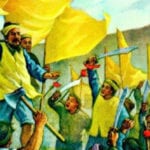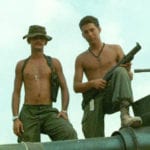 Weird Stuff
Weird Stuff  Weird Stuff
Weird Stuff  Mysteries
Mysteries 10 Tragic Disappearances and Deaths in Joshua Tree National Park
 History
History 10 Ways Childhood Really Sucked in the Old West
 Music
Music 10 Name Origins of Famous Bands from the 1990s
 Religion
Religion 10 Biggest Turnarounds by the Catholic Church
 Weird Stuff
Weird Stuff 10 Unbelievable Times Laws Had Unintended Consequences
 Humans
Humans Ten Historic Women Who Deserve Way More Credit Than They Got
 Movies and TV
Movies and TV 10 Films That Spawned Major Lawsuits
 History
History Ten Times Towns Were Wiped Off the Face of the Earth
 Creepy
Creepy 10 of the Most Disturbingly Haunted Public Houses in the UK
 Weird Stuff
Weird Stuff 10 Niche Subcultures That Are More Popular Than You Might Think
 Mysteries
Mysteries 10 Tragic Disappearances and Deaths in Joshua Tree National Park
 History
History 10 Ways Childhood Really Sucked in the Old West
Who's Behind Listverse?

Jamie Frater
Head Editor
Jamie founded Listverse due to an insatiable desire to share fascinating, obscure, and bizarre facts. He has been a guest speaker on numerous national radio and television stations and is a five time published author.
More About Us Music
Music 10 Name Origins of Famous Bands from the 1990s
 Religion
Religion 10 Biggest Turnarounds by the Catholic Church
 Weird Stuff
Weird Stuff 10 Unbelievable Times Laws Had Unintended Consequences
 Humans
Humans Ten Historic Women Who Deserve Way More Credit Than They Got
 Movies and TV
Movies and TV 10 Films That Spawned Major Lawsuits
 History
History Ten Times Towns Were Wiped Off the Face of the Earth
 Creepy
Creepy 10 of the Most Disturbingly Haunted Public Houses in the UK
9 Last Official Shots of Wars
It is the most shameful aspect of our species that we have a bent to murder. Step back from the history book and ask yourself, “Why are all these wars in here? Why are there so many? What is the common denominator of all casi bellorum throughout history?” It is a depressing subject, but this list looks at the official endings of nine wars, listed in no particular order, in an attempt to illustrate the relief that must have followed them.
Benjamin Franklin once said, “There has never been a good war or a bad peace.” In this sense, perhaps all wars have had a happy ending, which is that they do end. This list is unintentionally America-centric, but there is certainly plenty of ground left to cover in subsequent lists.
9American Revolutionary War
Unknown British Ship
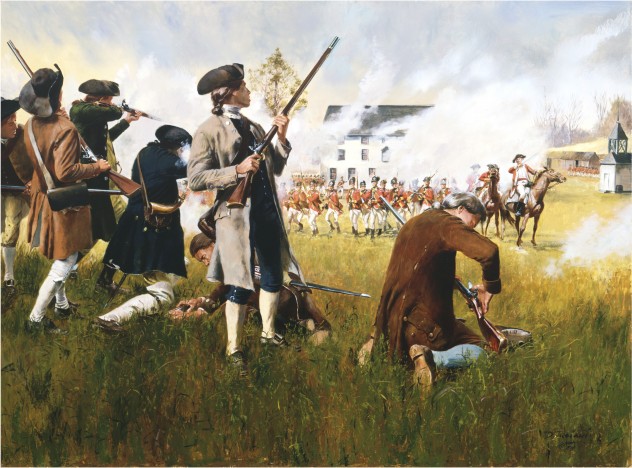
Ralph Waldo Emerson famously called the first shot of the American Revolution “the shot heard ’round the world.” That was fired at Lexington Green, Massachusetts on April 19, 1775. On November 25, 1783, the last shot was fired—this one from a cannon on a British frigate in New York harbor. Its target was a crowd of onlookers on the eastern beach of Staten Island.
General George Washington was at that moment riding his horse at the head of the Continental Army south down Broadway for the Battery, while the whole city was erupting in triumphant jubilation. The very last of the British were, against their will, in the process of leaving America, and thousands had turned out to mock them as they sailed for the open sea.
In their second-to-final act of defiance, having needed two full years since Yorktown to accept that they were defeated and not welcome, the British nailed the Union Jack to the top of a six meter (20ft)—tall flagpole, and greased the pole so that it could not be climbed. After several attempts, an American soldier named John van Arsdale nailed cleats to the pole and climbed up, ripped away the Jack and nailed the Betsy Ross flag in its place. While he was at the top, with the crowd roaring, the British ship fired its last act of defiance at the Staten Island beach. The nine-pound ball fell into the ocean 400 yards out, and the British were gone. They came back years later (see #7).
8Vietnam War
USS Turner Joy (1973)
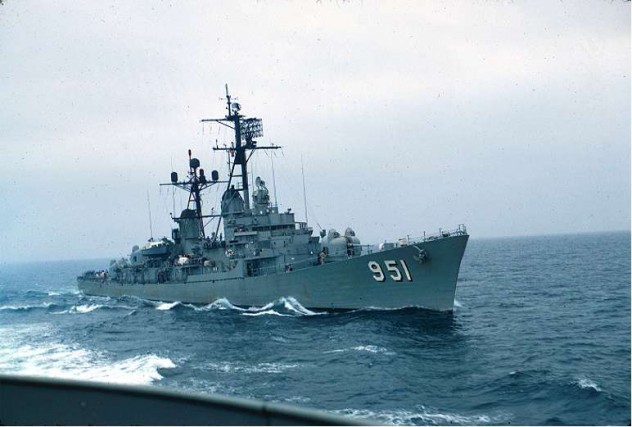
The whole of the Vietnam War ended with the fall of Saigon (and the apparent triumph of Communism and failure of Democracy) in 1975. But to save face, President Lyndon Johnson ordered all American involvement officially terminated by 1973. United States’ involvement in the war began with the Gulf of Tonkin incident—which was only half genuine—in 1964, and it is poetic that the Turner Joy fired the last official American shot of the war, since, in 1964, she arrived at the Gulf of Tonkin in support of the USS Maddox immediately after the Vietnamese torpedo boats had left.
On December 31, nine years later, the Turner Joy arrived in Subic Bay for resupply, then crossed the South China Sea and supported the South Vietnamese and American ground advances into North Vietnam by firing almost non-stop for the next twenty-eight days. More than ten thousand five-inch shells landed with precision on enemy emplacements, vehicles, material, and troops until 6:00 AM on the morning of 28 January 1973 (midnight GMT). The final shell was fired to the second, and struck its target approximately forty seconds later. North Vietnam made no casualty report relating to this engagement with the Turner Joy. After the final round was fired, the ceasefire America negotiated with North Vietnam went into effect.
After this, the Turner Joy helped remove sea mines from Haiphong Harbor, while the North Vietnamese pressed into the South. The South Vietnamese alone could not stop them, and in April 1975, Saigon was captured. South Vietnamese President Nguyen Van Thieu stated to the press that the United States betrayed South Vietnam and abandoned democracy to communism.
7War of 1812
USS Peacock

About thirty years after the Revolutionary War, Britain still hadn’t accepted its defeat at the hands of its own Colony. Britain might have taken some small measure of solace in the fact that America had been allied with the French, Spanish, and Dutch, and that Britain was fighting a war in India at the same time. In 1812, Napoleon was still on the warpath, and the whole of Europe seemed unable to stop him. Britain’s navy was invincible, but on the Continent, Napoleon reigned supreme until “Russian Generals” January and February destroyed his Grand Armee. The War of 1812 with America lasted for three years, and in 1815, with Napoleon loose from Elba, Britain was effectively fighting multiple nations or cultures simultaneously all over the world. If they could have concentrated solely on America, they would have beaten Washington.
Thirty years later, they did even better. The war has been called a draw, more or less, resulting in no territorial or governmental changes, but instead “status quo ante bellum,” or the state of things as it was before the war. It is difficult to call America anything but the loser, however, given that Britain sacked Washington, D. C. and burned it to the ground—including the White House, the Capitol Building, and even the Library of Congress with all its books. President Monroe fled for his life.
But as with #4, the land theater of operations was so confined that the British could not call this victory and leave. They still had several enemy armies in the field to deal with. General Andrew Jackson commanded one of them at New Orleans. It is darkly amusing to note that the Battle of New Orleans, on 8 January 1815, took place about two weeks after the War officially ended with the Treaty of Ghent.
It was because of such slow communications that the USS Peacock was still fighting British ships in the Sunda Strait, south of Sumatra, in 1815. The Peacock—captained by Master Commandant Lewis Warrington—encountered Britain’s sixteen-gun Nautilus, captained by Lieutenant Charles Boyce. Boyce allowed the Peacock to pull broadside to it, and Boyce explained to Warrington that terms for a truce had been officially agreed upon.
Warrington did not believe him and immediately opened fire with a single 32-pounder. This blast killed two seasick European civilians, one British sailor, and three Indian militiamen. The blast was so powerful, and the ships so close, that it wounded about four American sailors manning the cannon. Boyce quickly produced a signed document proving the Treaty of Ghent. Warrington then let the Nautilus go, and sailed home.
6Gulf War
USS Wisconsin
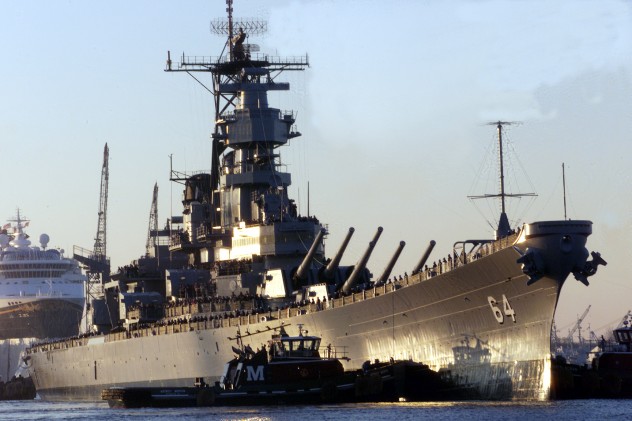
The Gulf War (Operation Desert Storm) officially began on 17 January 1991, several months after Saddam Hussein’s Iraq invaded Kuwait in retaliation for Kuwait refusing to pay $10 billion for slant drilling into Iraq at the Rumaila oil field. Hussein promised “the mother of all tank battles,” as Iraq could field at least 4,500 of them.
Unfortunately for Hussein, the United States does not play fair in war, and opened hostilities by carpet bombing Iraq with 88,500 tons of high explosives and incendiaries. After that, the M1 Abrams main battle tanks destroyed several thousand of the Iraqi tanks, and did not suffer a single casualty.
By the time the war was over, the allies had lost about seven hundred men, while Iraq had lost between 20,000 and 35,000. The Wisconsin fired the last shots—a three-round salvo of sixteen-inch explosive projectiles—on 28 February, striking a fuel dump just over the Kuwaiti border in Iraq. This remains the last time American battleships were employed in active warfare.
5Apache Wars
Unknown American Corporal
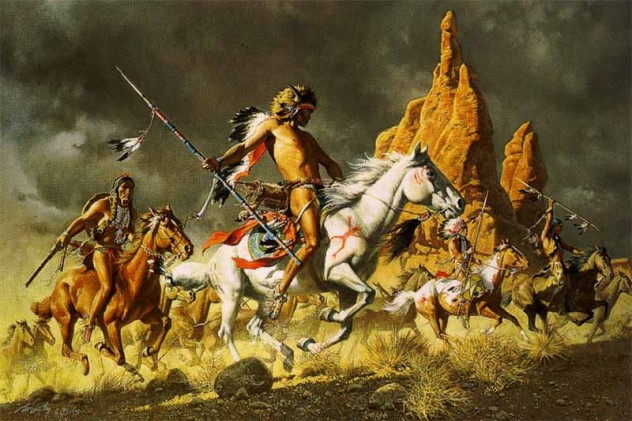
The Apache Wars constitute a small portion of the American Indian Wars, which are usually dated from 1850 to about 1924. In truth, the war lasted from the 1620s, off-and-on for three centuries. European settlers very rarely thought of the native peoples as equal to themselves, and the government practically never did. Because the Indian tribes could never make a lasting and universal peace among themselves, they could not form a sufficiently strong army to defeat the settlers. The largest alliance was probably that of the Six Nations, formed in 1722, incorporating the Seneca, Onondaga, Oneida, Mohawk, Cayuga, and Tuscarora.
The Apache nations fought major engagements against the United States Army from about 1849 to 1886, but the war lingered on until 1924, by which time the Apache were completely subjugated. The last recorded armed action between Apache warriors and the US Army occurred on January 9, 1918, when a cavalry detachment of about thirty was alerted by a farmer of mutilated livestock near his ranch. The cavalry sent some of its men to the top of a ridge to scout for Indians, and thirty of them were seen about a quarter of a mile away.
They were Yaqui Indians, allied with the Apache, and the cavalry rode out to hunt them down. The Indians hid in a boulder field on the ridge and ambushed the soldiers with rifle fire, then began falling back as the cavalry pursued them. Only one man—an Indian—was killed. The corporal who fired on him has not been recorded, but he managed to hit the Indian as he was running between rocks.
There were minor hostile encounters such as this between the US and various other tribes for a few more years, but very few—if any—of them resulted in shots fired. This was the last known shot fired by or against any of the Apache or their allies.
4American Civil War
CSS Shenandoah (CSA)
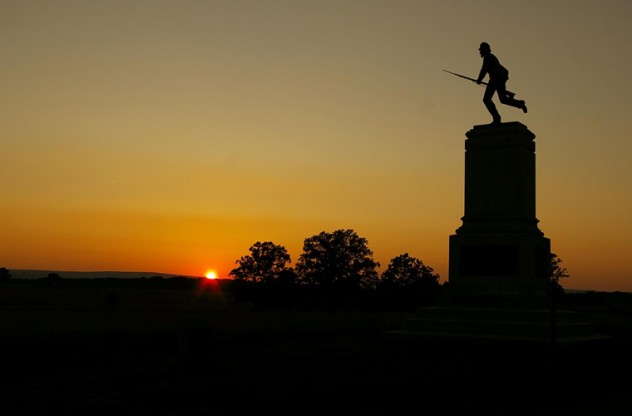
Many scholars have cited the War of Northern Aggression, as the South likes to call it, as the first modern war. It was no longer impossible to fire at one another in the rain, since percussion caps are not exposed gunpowder. The war saw the introduction of the first machine gun, the Gatling, and the first repeating rifles. The American population at the time totaled 31.5 million, and at least 620,000 men died during those four years and four months—two percent of the nation. Today, there are about 316 million people in the United States, two percent of which is 6,320,000. Listverse’s American readers must find it very difficult to imagine the grief America’s population suffered because of its Civil War.
Because the war was fought in such close confines, the concept of gaining ground did little to bring about a conclusion. If Washington, D.C., or Richmond had been successfully captured, a whole army would have been only weeks away from coming to its aid. The only real goal of the war for either side was to kill as many of the enemy as possible until they gave up. The South never had a chance.
Communication left a lot to be desired back then, and when Lee surrendered to Grant at Appomattox Courthouse on 9 April, 1865, it was not until August 2 that the word reached the Shenandoah. The Confederate Navy was based primarily out of Liverpool, England, to ensure that the Union could not nullify it. The Shenandoah was the most fearsome ship they had. Her orders on the outbreak of war were to sink or capture Union mercantile vessels, and she did so to thirty-eight of them, without losing a single crewman to combat.
Most of these prizes were whaling ships, and on June 28, 1865, in the Bering Sea between Alaska and Russia, the Shenandoah sank or captured ten vessels of a Union whaling fleet. The last of these was the Waverly, which was fired upon, boarded, and stripped of all crew and valuable cargo, then burned into the sea off the Diomede Islands. Just over a month later, the Shenandoah parlayed with a British ship and learned of Lee’s surrender. It immediately struck its colors and sailed for England to surrender where its crew would not be hanged.
3WWI
Two Unknown German Machine Gun Squads
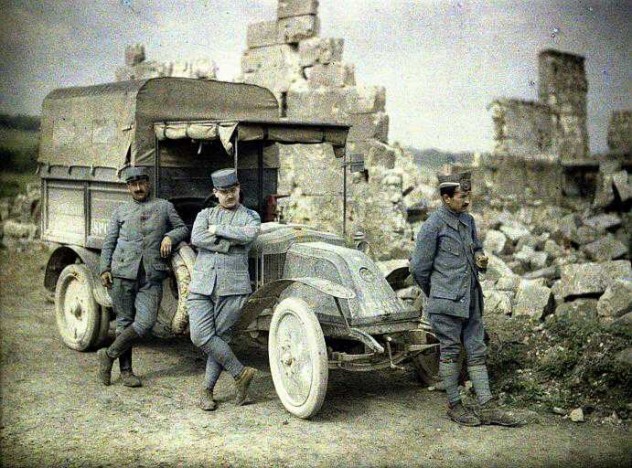
The worst war anyone had ever seen finally put an end to the general notion that there is glory to be had in fighting and dying for patriotism or for any sense of duty. Until then, warfare was conducted according to the classical principles of troop movements on the field. Everyone moved as one, whether battalion, regiment, or company. The belligerents approached within range and fired until one side broke and ran. That sounds idiotic—but it lasted for millennia, until Hiram Maxim figured out how to make the truly modern machine gun.
The British and Germans both had the gun in World War One, but neither side’s military theory had progressed beyond classical formations. On July 1, 1916, the British sent thirteen divisions of their Fourth Army directly into the Germans’ machine gun fire, and 19,240 men were cut in half as they walked calmly forward. It was, perhaps, the single most crystalline moment of insanity warfare has yet produced on Earth. That battle, the Battle of the Somme, was an utter stalemate. Those men died for not the slightest gain.
Two years later, with the Germans and their allies exhausted from fighting just about everyone else in the entire world except America, the latter finally joined in against them, and the Germans could no longer hold out. They surrendered—and all sides signed an armistice that went into effect on November 11, 1918, at 11:00 AM French time. In the town of Ville-sur-Haine, Belgium, a Canadian named George Price was shot through the heart by a German sniper just three minutes before the Armistice would take effect.
Two minutes later, about one hundred and fifty miles to the south, American private Henry Nicholas John Gunther and his squad were approaching a German machine gun roadblock in Chaumont-devant-Damvilliers, France. The Germans called in English for them to stop, explaining that in sixty seconds the war would be over. Gunther had been demoted from Sergeant months earlier and wanted to regain his honor, so he charged them on foot, though his men shouted for him to come back. He fired one or two shots from his rifle, and the two German squads opened fire for two full seconds, nearly cutting him in half across the breast.
2WWII: Europe
PFC Domenic Mozzetta (USA)
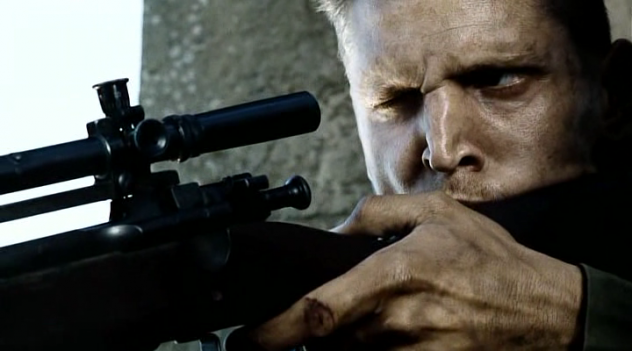
The 97th Infantry Division did not see action in Europe until March 1945, with plenty of fighting still to be done. The Russians would not initiate the Battle of Berlin for another month, and that alone would result in about 180,000 dead. The American Domenic Mozzetta was in Baker Company of the 387th Regiment of the 97th, and they joined in the reduction of some four hundred thousand Wehrmacht and Nazis, supplemented by World War One veterans and the Hitler Youth, in the Ruhr River Valley. This encirclement netted about 300,000 German prisoners of war, most of whom finally grew tired of fighting and realised that the end was inevitable.
Anti-Nazis tried to surrender Dusseldorf to the Americans to spare it from bombing, but the SS, true to form, quelled this rebellion and killed most of the people involved. The Americans had been contacted, though, and Dusseldorf was spared. By the end of April, the 97th had moved through southwestern Germany into Czechoslovakia, fighting severe urban battles and in thick forests, and liberating Flossenburg Concentration Camp, until they received the ceasefire of May 7.
At 11:55 PM that night, while on patrol about three kilometers (two miles) northwest of Klenovice, Mozzetta was shot at by a German sniper. The bullet severed a tent pole; Mozzetta fired back four times at the muzzle flash, and the German plummeted from a tree. Five minutes later, the European Theater of the Second World War was officially at peace.
1WWII: Pacific
USS Torsk (USA)
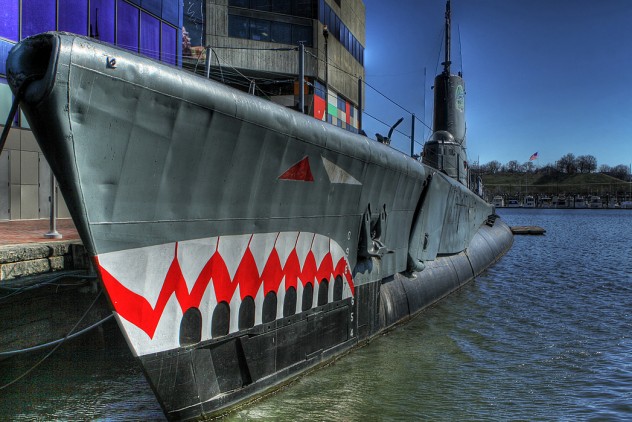
The Japanese war council agreed not to surrender after Hiroshima was destroyed, vowing to fight on until either every single person on the Japanese Islands was dead, or the invaders desisted. When the Soviets declared war on August 9, the Japanese Army’s most senior officers set about declaring martial law to stop anyone from negotiating peace. Almost exactly eleven hours later, downtown Nagasaki was obliterated and Emperor Hirohito declared the unconditional surrender of the Empire of Japan.
Several thousand Japanese still resisted this announcement for a few days. It took until August 15 for the declaration of the cessation of the hostilities to reach all American warships in the Pacific. The last shot of the entire Second World War was not a bullet but a torpedo, fired from the submarine Torsk off Kasumi Ko, north of the southwest Honshu coast. The Torsk, commanded by Bafford Lewellen, had been hunting military cargo ships and sighted one escorted by an armed frigate. It fired on and sank the frigate first, but the cargo ship was shielded by coral reefs and escaped. About one hour later, at midday on the 14th, a second frigate entered the area and dodged the Torsk’s torpedo. The Torsk then fired again, this time the newly-designed, electrically-propelled Mark 27 torpedo, which homed in on its target via sonar, and broke the ship into pieces.
Several more armed vessels and airplanes converged on the area, and the Torsk remained underwater for over seven hours before escaping. The next morning, Commander Lewellen relayed to the ship that Japan had given up. The deadliest war in human history had come to its end.
FlameHorse is a writer for Listverse.




